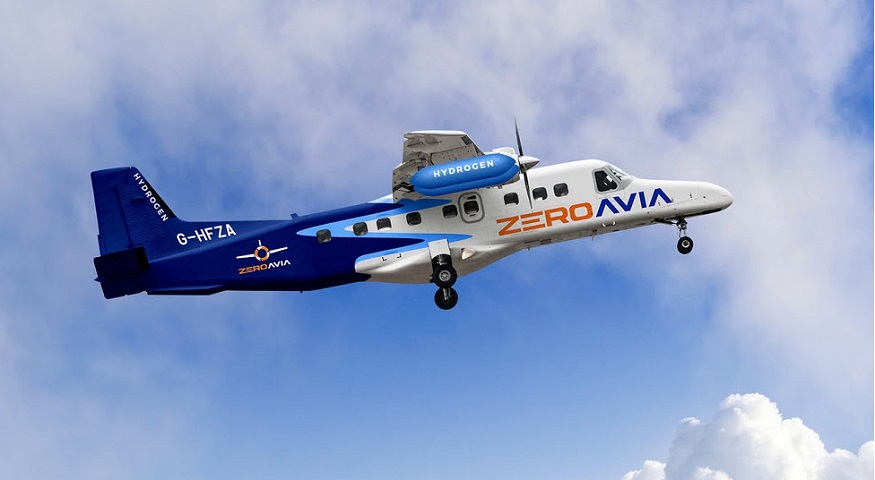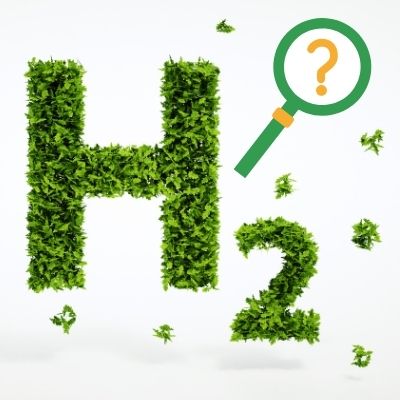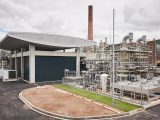
ZeroAvia adds new hydrogen electric aircraft to its HyFlyer aviation program
July 7, 2021The UK company recently added a 19-seat craft and raised funding for large engine development.
ZeroAvia has announced that it is boosting its hydrogen electric aircraft program with the expansion of its 19-seat zero-emission plane HyFlyer II program.
The company will be using two twin-engine 19-seat Dornier 228 aircraft in its HyFlyer expansion.
The first of the hydrogen plane was provided by Aurigny and is in the United Kingdom. The second was provided by AMC Aviation and is in the United States. Both of the planes were previously used for UK and US regional flight service. This conversion in to H2 planes is meant to demonstrate the opportunity H2 technology offers for decarbonizing existing flight routes.
The company’s 19-seat research and development is a component of HyFlyer II, the second project ZeroAvia has led with the backing of the UK Government. With HyFlyer I, the company was successful in demonstrating the potential of a 250k powerplant in a 6-seat aircraft across three test campaigns. These achieved every one of the technical goals identified by the project, including cruise flight powered exclusively by fuel cells. Everything learned throughout the original project will be used in the development of the next step’s 600kW powerplant in the 19-seat plane.
Further hydrogen electric aircraft engine development will continue with newly secured funding.
ZeroAvia recently brought in an additional $13 million in funding for its engine development program for a 50+ seat plane. The funding was secured from AP Ventures, already an important investor in breakthrough H2 tech up and down the value chain. Other investors included in this funding included Climate Pledge Fund (Amazon), Summa Equity, Breakthrough Energy Ventures, SYSTEMIQ, Shell Ventures, and Horizon Ventures.
The funding complements the initial investment round of $24 million announced earlier this year, which brings ZeroAvia’s total private investment into its 50+ seat large plane engine development to $37 million.
First Propeller Spin for ZeroAvia’s Dornier 228 19-seat Testbed Aircraft…
“We are eager and ready to begin testing our hydrogen-electric powertrain technology on a larger commercial-size aircraft and grateful to our investors and grant funders for their continued support of our vision for sustainable aviation. Various projections indicate that aviation may account for over 25 percent of human-induced climate effects by 2050. We are on the path to helping reverse that trend, first with our successful 6-seater testing and now with the R&D for our 19-seater, and the kick-off of our 50+ seat program. Hydrogen is the only practical solution for true climate-neutral flight, and it will become a commercial reality much sooner than many predict,” said ZeroAvia Founder and CEO Val Miftakhov in a statement about the hydrogen electric aircraft and new funding.
About HyFlyer II
ZeroAvia’s HyFlyer II project will involve the development of the first hydrogen-electric powertrain that is certifiable for powering aircraft with up to 19 passengers. It is the next step after the original project, which involved the development of the first commercial-grade hydrogen-electric aircraft, in 2021. In that case, a smaller version of the powertrain was used in a 6-seater aircraft, the Piper Malibu M350. The project will conclude in early 2023 with the first ever flight of the 19-seat hydrogen-electric aircraft, which will travel for 350 miles.
![]()
 H2 Spotlight Question – What are the pros and cons of hydrogen energy? Discover the answers!
H2 Spotlight Question – What are the pros and cons of hydrogen energy? Discover the answers!
Hydrogen energy comes with a lot of potential, but like everything else, it has its drawbacks too. Countries may be betting on a hydrogen economy to meet their climate change targets, but this doesn’t mean that there isn’t a downside worth considering. HFN can help you to learn both the strengths and weaknesses of this carbon emission-free fuel. For even more details, check out the information in the Learning Center and grab your copy of the free ebook. Don’t miss a single detail by signing up for the newsletter below.



 With over 15 years of reporting hydrogen news, we are your premier source for the latest updates and insights in hydrogen and renewable energy.
With over 15 years of reporting hydrogen news, we are your premier source for the latest updates and insights in hydrogen and renewable energy.
Very interesting, but the headline and lede make it seem as thuogh these planes are already in service, or soon will be. Only in the quote at the end of the article do we find, as suspected, that the 19-seater Is only in the R&D stage.That is great, but please strive for greater accuracy in headlines and ledes!